Common Problems People Make When Using Synthetic Web Slings
Learn the most common mistakes workers make when using synthetic web slings, including protection, storage, choking, and inspection practices.
If you’ve spent any time around cranes, rigging gear, or a busy job site, you’ve probably seen, or have used, synthetic web slings. They’re one of the most common pieces of rigging equipment in the industry, and for good reason:
- They’re lightweight and easy to handle
- They don’t damage loads as easily as wire rope or chain
- They’re affordable
- They’re versatile in vertical, choker, and basket hitches
Because they’re inexpensive and easy to use, web slings often become the “everyday sling” in the field. But that popularity has a downside: they’re also one of the most commonly abused and misused rigging tools.
So, what mistakes do people make when using synthetic web slings? How do those mistakes impact safety, sling performance, and inspection outcomes? And what can you do to make sure your slings last longer and perform the way they’re supposed to?
We’ll cover those topics, and more, in this article.
How Do Workers Use Synthetic Web Slings?

Synthetic web slings are used in a variety of settings and applications. Some of the most common ones include:
- Construction sites for moving prefabricated materials without scratching or denting them. They’re also incredibly cheap and can be purchased new at the beginning of a construction project and discarded when the project is complete.
- Manufacturing and steel plants want wider slings to help control the load or provide greater stability.
- Aerospace and automotive plants where painted, coated, or delicate parts need protection
- General industrial settings where workers want lightweight, easy-to-store lifting gear
You can also handle synthetic slings with reduced strain on your body.
But the same qualities that make them appealing (soft fibers, flexible construction, lightweight design) also make them more vulnerable to cuts, abrasions, and misuse.
Common Problems with Synthetic Web Slings
1. Not Using Sling Protection
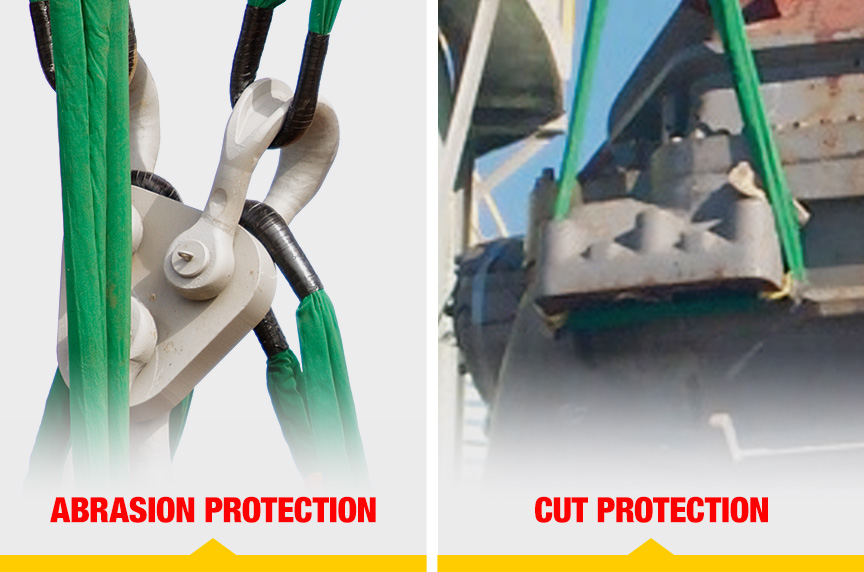
The single most common mistake is using a web sling without any protective sleeves, edge guards, or corner protectors.
Web slings are vulnerable to cuts and abrasion. If you’re lifting steel with edges, concrete with rough corners, or anything that can bite into polyester and nylon fibers, you’re risking sling failure without protection.
Many riggers treat slings as disposable because they’re cheap. “It’s only $15 to replace, so who cares?” But this mindset overlooks the real cost: downtime, dropped loads, potential OSHA citations, and worker injuries.
Best practice: Always use proper sling protection—wear pads, edge guards, or sleeves—whenever a sling makes contact with edges or surfaces that can cut or wear fibers.
2. Using the Wrong Sling Size
Another frequent issue is using a sling that’s too narrow or not rated high enough for the load.
For example, riggers sometimes grab a 1-inch web sling because it’s convenient, when a 4-inch sling would better stabilize the load and distribute weight.
Best practice: Select the correct sling width and capacity for your lift. Always compare the load’s weight and configuration with the sling’s Working Load Limit (WLL).
3. Bunching and Pinching in Hardware
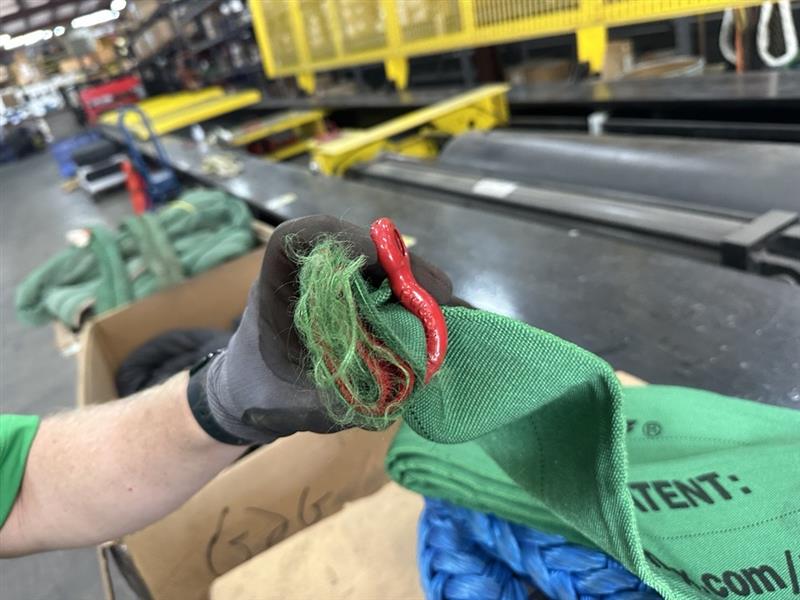
When web slings are used with hooks, shackles, or pins that are too small, the sling eye or body can bunch or pinch. This reduces sling efficiency and increases stress at specific points.
For example:
- A sling eye riding up the side of a shackle
- A wide sling stuffed into a narrow hook
- A sling body bent around a pin that’s too small in diameter
All of these conditions reduce the sling’s lifting capacity and accelerate wear.
Best practice: Always pair slings with properly sized hardware. Use shackles and hooks designed for web or round slings when possible.
4. Improper Hardware Use
One scenario we see often: a web sling in a choker hitch wrapped around a screw pin shackle. As the sling rotates under tension, the pin can back itself out.
Best practice: In situations where rotation is possible, use a bolt-type shackle (with bolt, nut, and cotter) instead of a screw pin shackle. This prevents the pin from loosening during the lift.
5. Poor Storage Practices
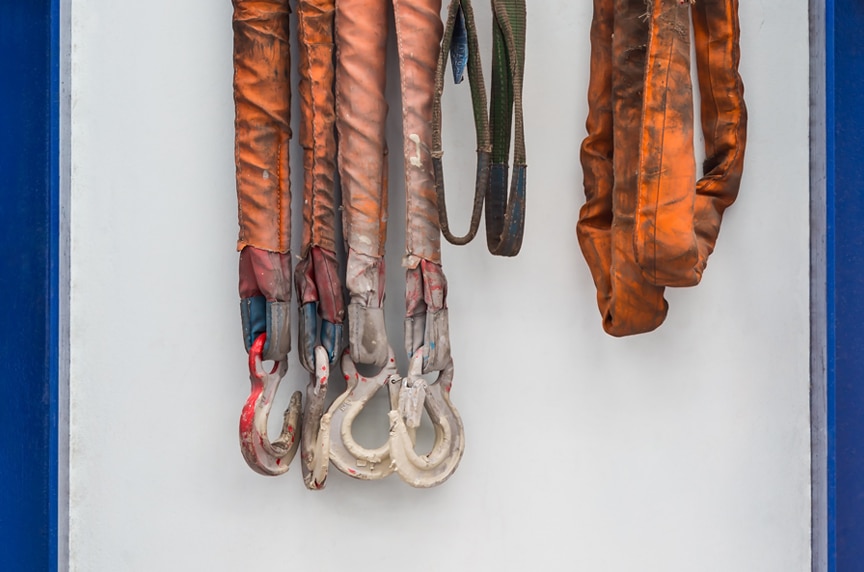
Improper storage shortens sling life dramatically. Common mistakes include:
- Leaving slings outside in rain or snow
- Storing slings in direct sunlight where UV rays degrade the fibers
- Allowing slings to remain damp or exposed to chemicals
Roundslings with darker jackets (black or navy) resist UV better than light-colored jackets, but all polyester fibers eventually degrade with prolonged exposure. Flat web slings, with no protective jacket, are especially vulnerable.
Best practice: Store slings in a dry, shaded, ventilated area away from UV light, moisture, and chemical exposure.
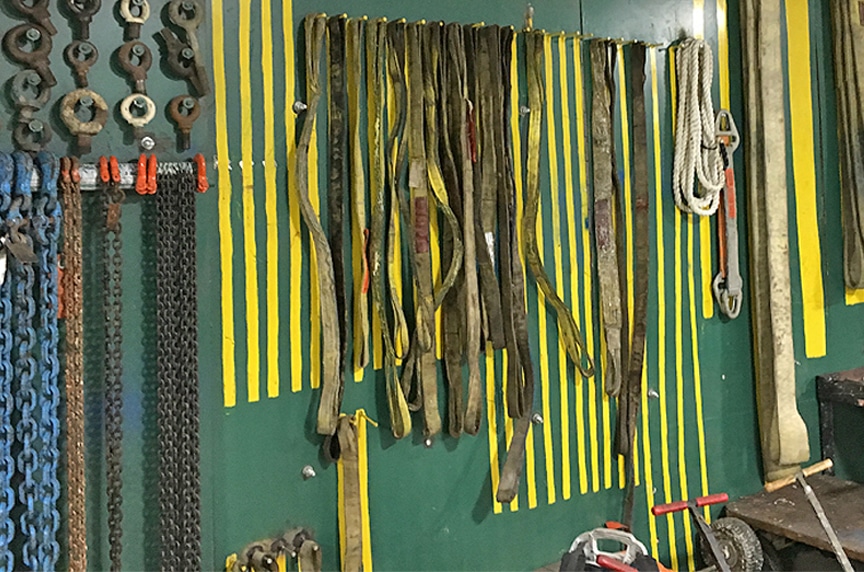
6. Neglecting Pre-Use Inspections
Many workers grab a sling off a rack, glance at the tag, and go straight to work. That’s not enough.
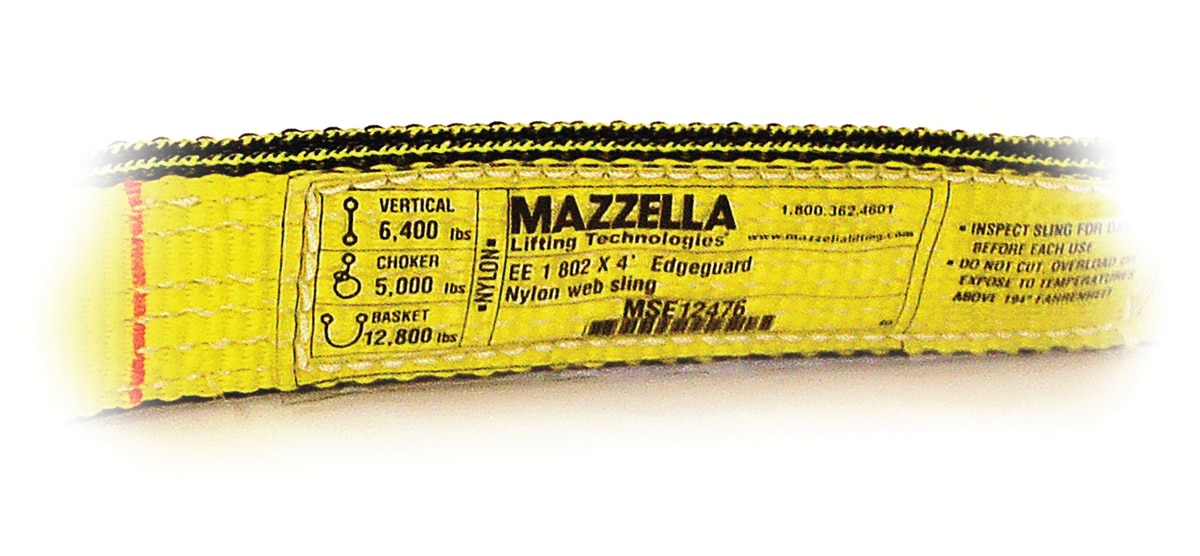
A proper pre-use inspection includes:
- Checking the tag for manufacturer, model, capacity, and hitch configurations
- Hands-on inspection of the entire sling body, not just the visible side
- Looking for:
- Cuts, pulled threads, or abrasions
- Burns or weld spatter
- Punctures or chemical damage
- Oil or grease saturation
- UV degradation (faded, brittle fibers)
One overlooked area is the crotch of the eye, where stitches and threads take the most stress. Hardware that’s too large for the eye can stretch fibers, damage stitches, and shorten sling life.
Rule of thumb: Hardware inside the sling eye should be no more than 50% of the eye’s width.
7. Improper Choking
Something else often overlooked: improper choker hitches.
When choking with a flat web sling, the eye must be properly seated over the body before tension is applied. Too many operators allow the crane or hoist to “pull the slack out,” which creates friction between the sling eye and body. This results in friction burns and accelerated wear on the webbing.
Best practice: Always seat the eye over the body of the sling manually before applying tension. Or use proper hardware for this task.
Why These Problems Matter
At first glance, synthetic web slings might seem disposable. They’re inexpensive compared to wire rope or chain. But misusing them creates real safety hazards.
- A sling that fails mid-lift can cause catastrophic accidents.
- Replacing damaged slings repeatedly costs more than training workers to use and protect them correctly.
- OSHA and ASME require regular sling inspections, including pre-use or pre-shift, and failure to comply can result in citations and liability in the event of an incident.
It’s not about the price of a sling. It’s about the cost of downtime, injuries, or worse, death.
Final Thoughts on Proper Synthetic Web Sling Use
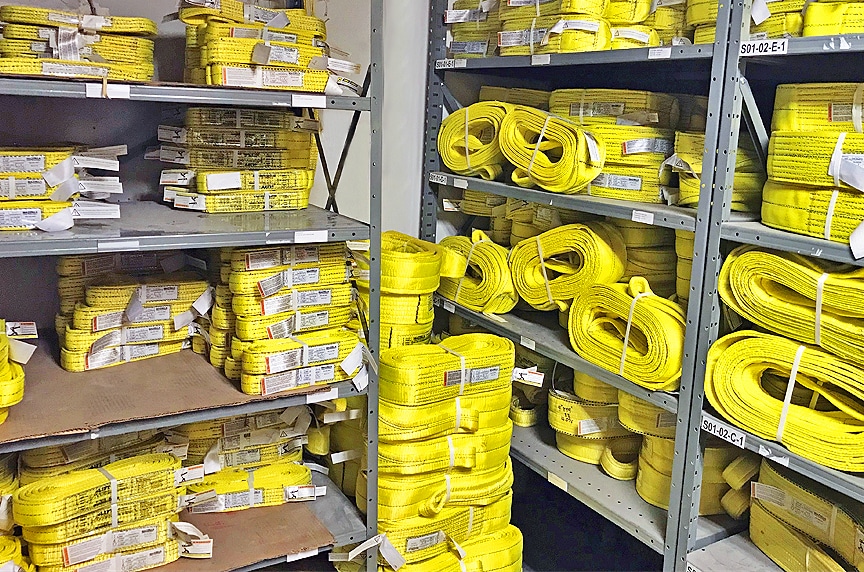
Synthetic web slings are popular because they’re light, flexible, and cost-effective. But that popularity comes with responsibility. Treating slings as disposable tools leads to poor habits that put workers and loads at risk. Before using them, always remember to:
- Always use sling protection when contact with edges is possible.
- Select the correct width and capacity for your load.
- Avoid bunching and pinching by using hardware sized for web slings.
- Use bolt-type shackles when rotation could loosen screw pins.
- Store slings properly to avoid UV, moisture, and chemical damage.
- Perform full pre-use inspections—hands-on, every time.
- Seat choker hitches correctly to avoid friction burns.
By focusing on proper protection, correct sling selection, hardware compatibility, storage, and inspection, you extend the life of your equipment and protect the people who rely on it every day.
A safe working environment is achieved when you treat even the simplest piece of gear—like a synthetic web sling—with the respect it deserves.
If you would like to learn more about lifting slings, download our Lifting Slings Types & Terms e-book. You can also buy web slings on our website.
Frequently Asked Questions About Synthetic Web Slings
Copyrigtht 2025. Mazzella Companies.

